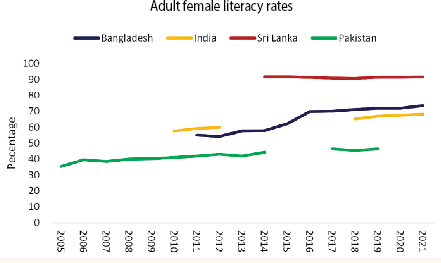THE Chotiari water reservoir — characterised as wetlands complex — lies in Sindh on western wings of Nara desert commonly called Achhro Thar or white sandy desert, some 35 kilometres northeast of Sanghar town.
The reservoir occupies an area of about 18,000 hectares and has a storage capacity of 0.75 million acre feet flooding approximately 160 km² in three districts of the province.
The aquatic features of the reservoir area comprise diversity of small and large size (1-200 hectares) freshwater and brackish / salty water lakes. The main storage of the reservoir has Thar desert on one side, is bounded by sand-hills towards north-east and south-east, the Nara canal towards the west and south bunds and dikes surround the reservoir: the northern bund with 19km-long embankments, western bund of 14 km, the southern bund with 16 km and south-eastern dikes, 9 km-long.
The project approved in 1992 was started in 1994. It was to be completed in three years, by December 1997, at a cost of Rs1.5 billion, the Left Bank Outfall Drain (LBOD) being recognised as feeder canal of the dam. However, due to ineffective planning and alleged corruption, the project was completed in December 2002, at a total cost of Rs6 billion.
Land in the surrounding area of the embankments is largely waterlogged full of reeds and wild grasses. Due to full storage in the dam area to the extent of about 0.75 MAF, the grazing area within the embankments is mostly submerged in the reservoir since 2005. This has caused relocation of the periphery villages and difficulties for fishing boats which are not properly equipped.
In the past, the Chotiari lake area was characterised by wetlands, riverine forests, desert scrubs and sand dunes, which provided an ecological richness, and nesting ground for resident and migratory birds, hog-deer, local species of crocodile, variety of fish species, otters, fresh water and turtles. These lakes also supported grazing, fishing and agricultural activities of indigenous people and tourist entertainment services to nationals. But after the construction of the reservoir, the area lost its natural beauty and features.
According to the Chotiari resettlement agency (CRA), the officials estimate that there are 594 affected families, of which 205 are farmers, 48 farmer landowners, 117 landlords, 168 livestock breeders, 21 fishermen, five labourers and 20 others. The community representatives and their organisations challenge these figures as their surveys identified a total of 993 families that were directly affected by the construction of the reservoir, of them 382 are livestock breeders, 221 fishermen, 242 farmers, 127 landlords and 20 government servants.
It shows that official surveys fell short of reaching out to all the direct affectees let alone the indirect affectees. So, in the name of development these families were evicted to build the Chotiari water reservoir, where they lost everything, i.e., their homes, livelihood, farmlands, pastures, fishing farms, and small handicraft industries.
The evicted people are living as nomads, a majority of them still in search of shelter. According to some independent studies “these people were well-settled in their ancestral homes leading a happy life before the construction of Chotiari reservoir.”
Compensation and resettlement issues of the Chotiari affectees have not been resolved as yet. The government’s resettlement and compensation policies, in fact, are made without considering the economic and social conditions of the displaced people. These plans are without exception spoiled by stories of corruption, favouritism and mismanagement.
According to the United Nation report on resettlement plan, the government itself had acknowledged that funds were defalcated; several inquiries had been instituted to determine as to who was responsible for that, but nothing was documented.
The affectees of Chotiari reservoir were never consulted or invited to participate in the decision to build the reservoir or in other words, the project was imposed on them. The authorities appeared to be irresponsible towards the needs and preferences of the affectees to the extent that their views and concerns were never considered in the assessment of the market value of their land and property and the finalisation of the compensation rates.
In addition to this, the selection of the relocation site was carried out without informing and involving the displaced families who were supposed to go and earn their living there.
Indeed, this reservoir was built without any concern with the people’s quality of life and with the environment, which generated devastating and disastrous affects from social and ecological point of view.
In case of Chotiari reservoir, the authorities had merely taken into consideration a territory suitable for construction of the reservoir, ignoring human beings who lived there for centuries, and their legitimate rights. Thus it is a gross violation of human rights. Due to the seriousness of the situation, it would be suggested, that the authorities should evaluate and mitigate the social, economic and environmental impacts of such development projects and protect the rights of the affected people.
E-mail: habib.magsi@agroparistech.fr

































